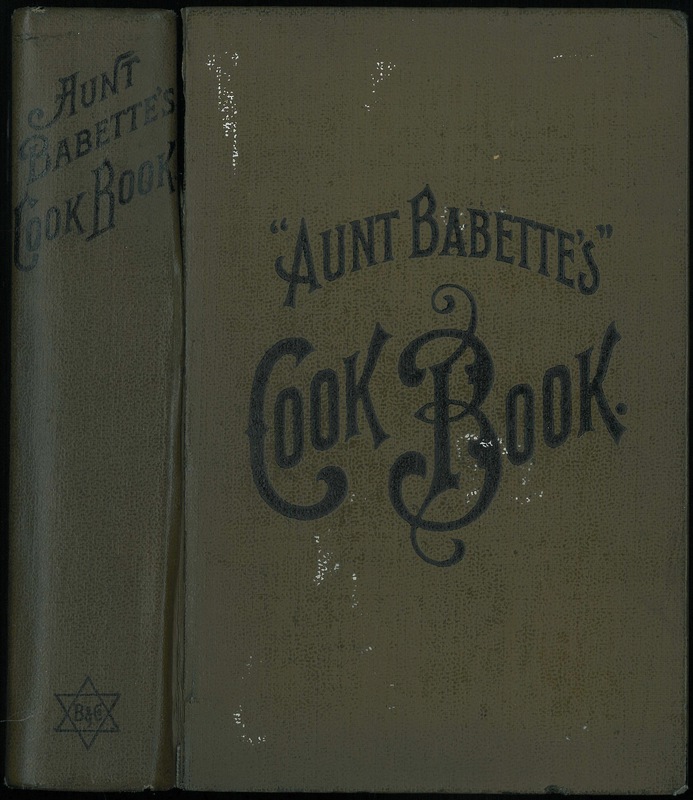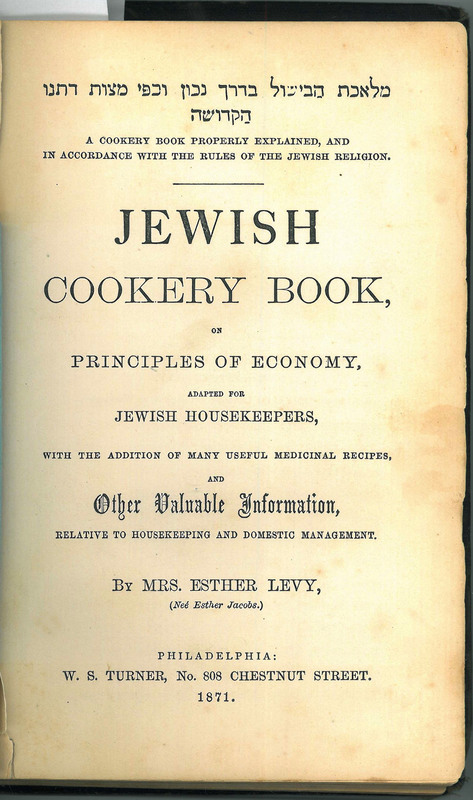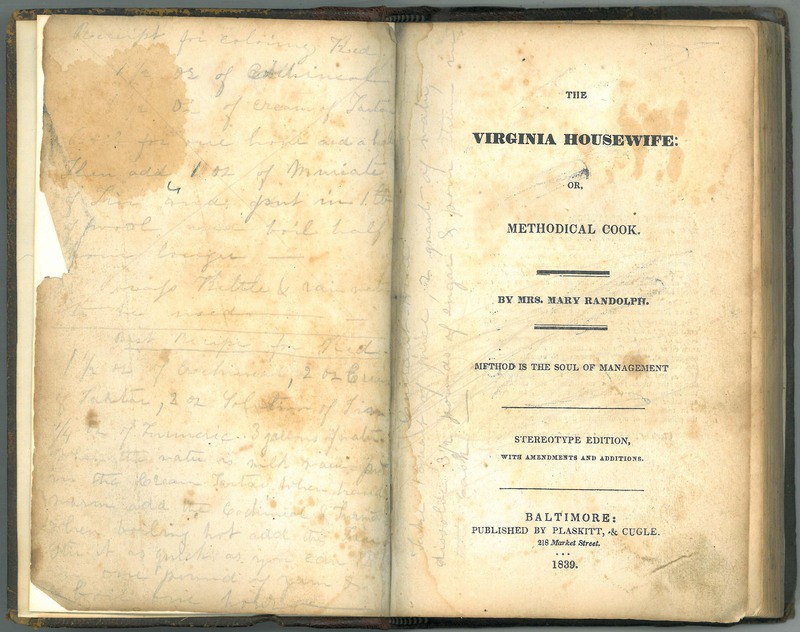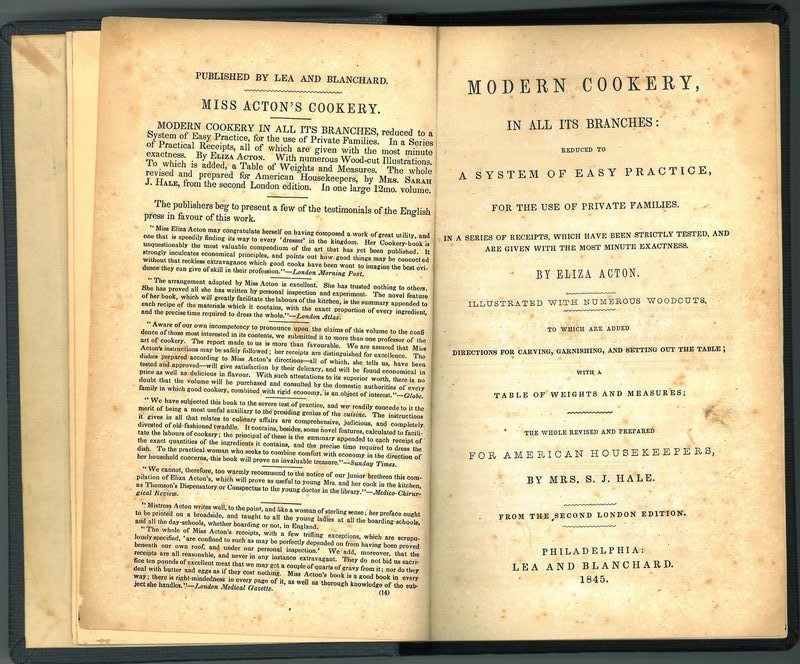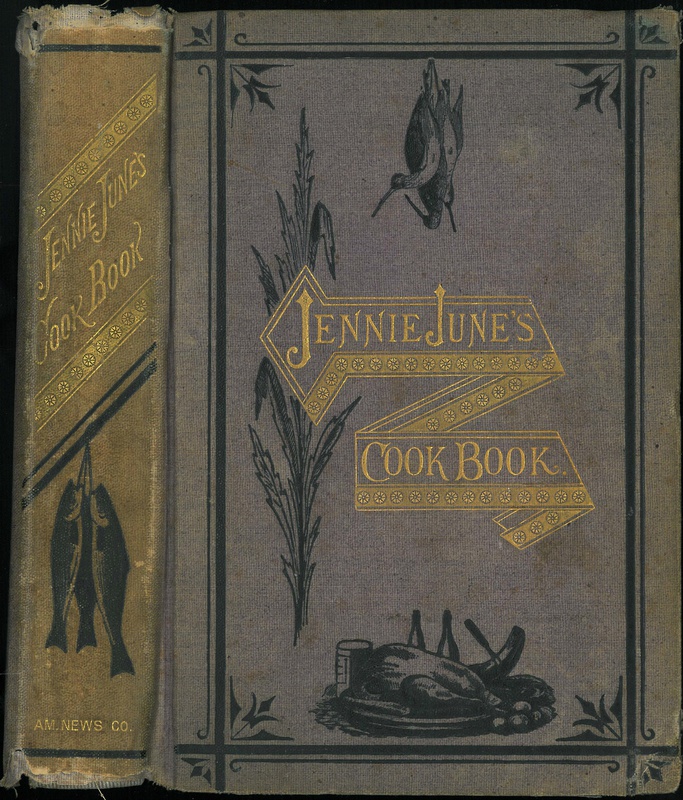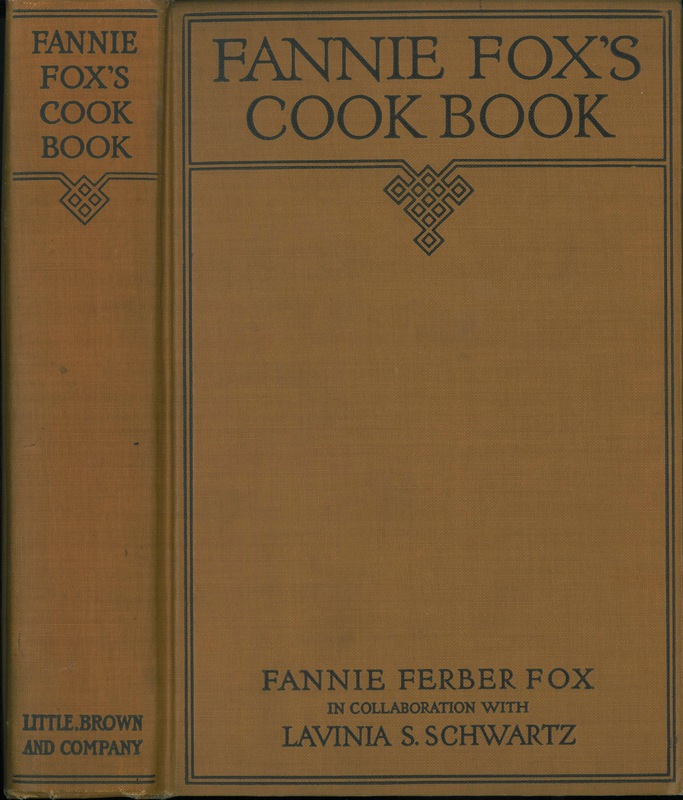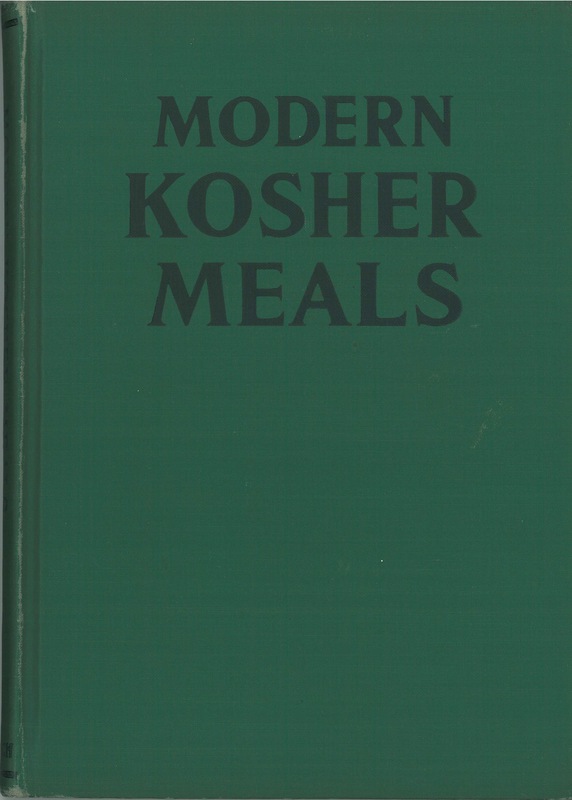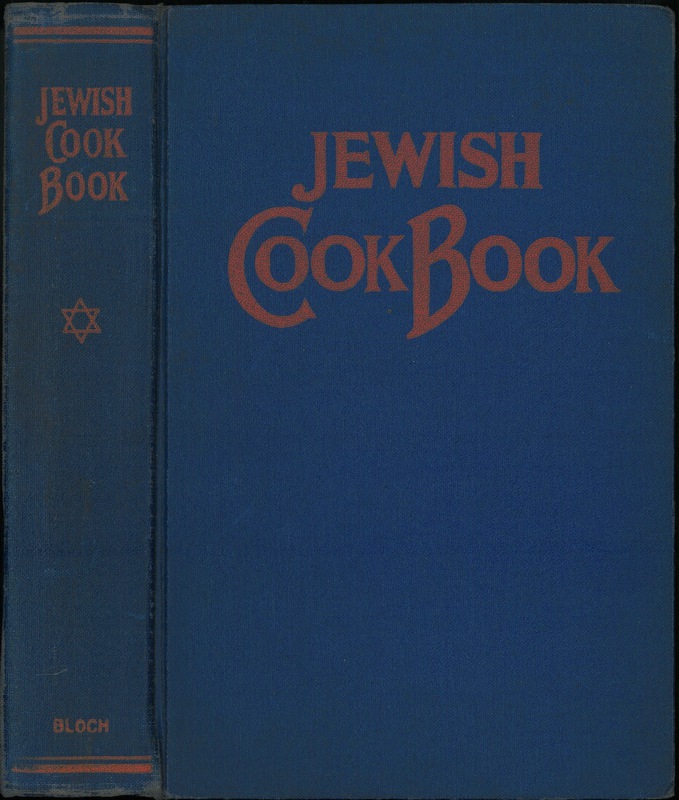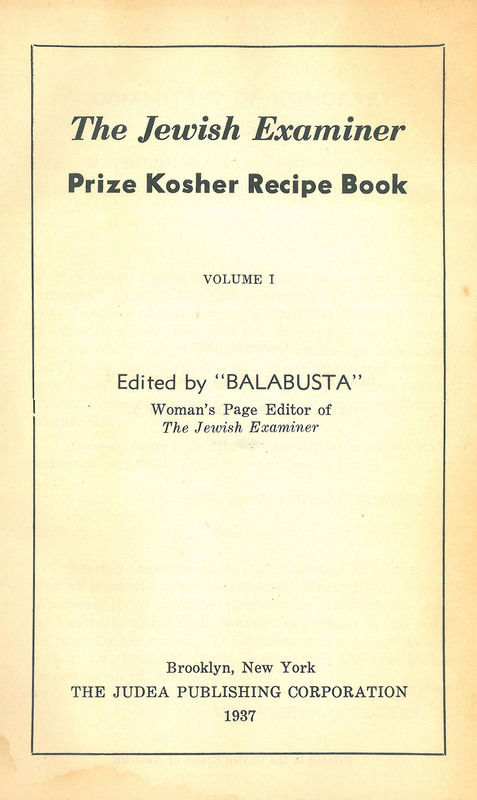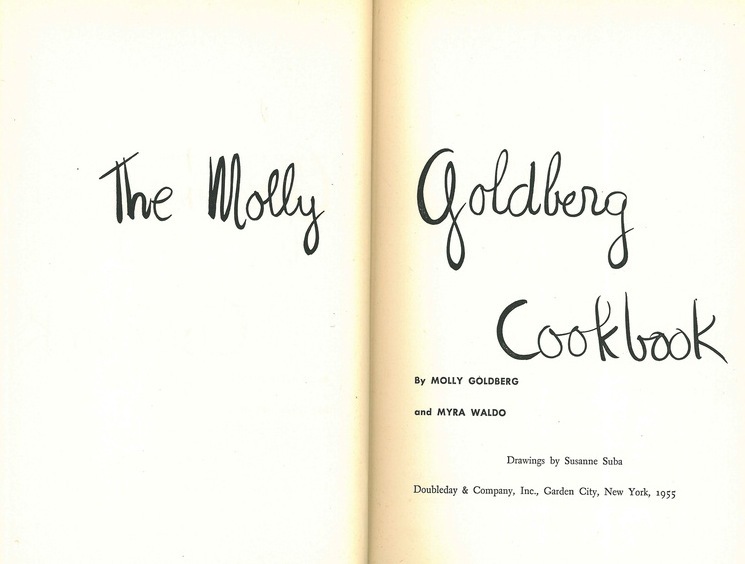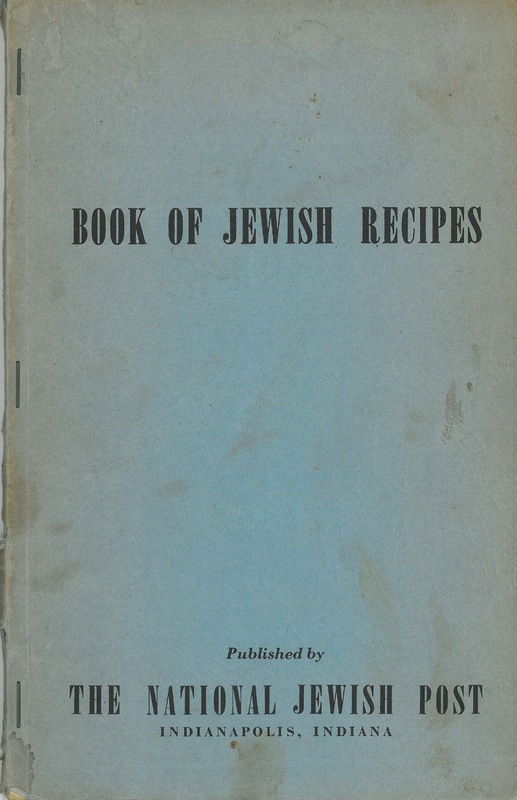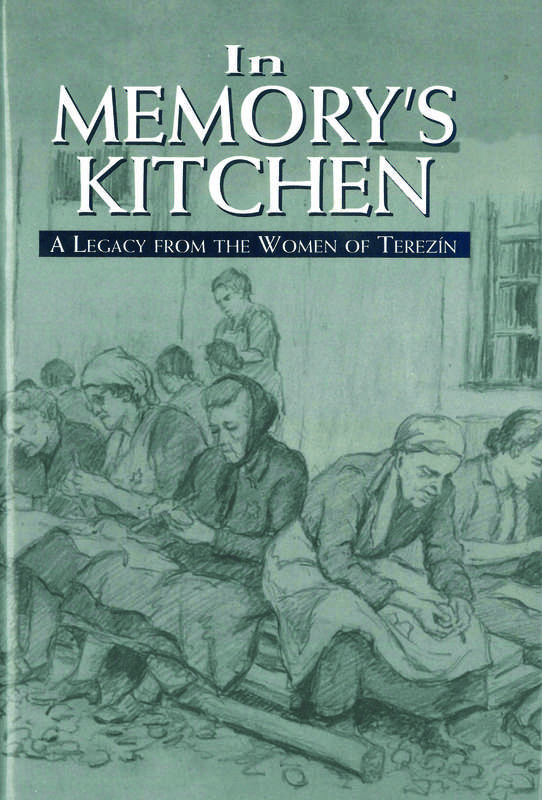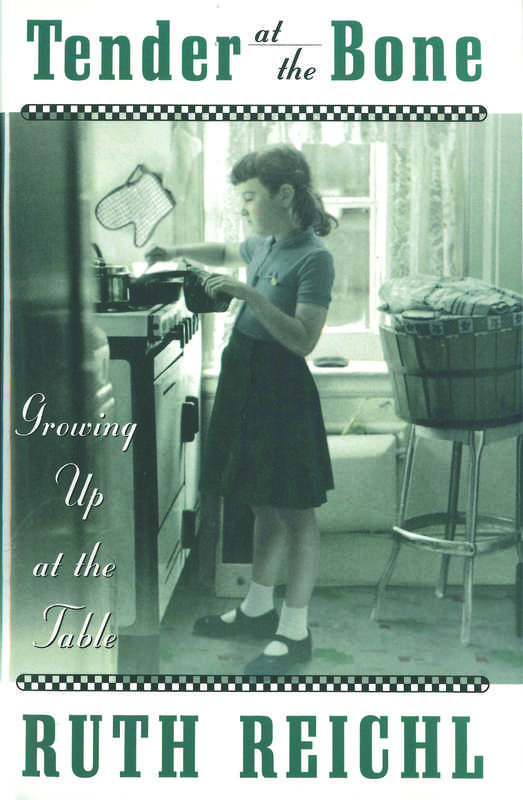The Commercial Cookbooks
Where it Began
This section holds some of the earliest English-language cookbooks with Jewish food. These items provide the earliest record of Jewish food in America (and England) available for the public. These are not charity cookbooks. Rather, they are commerically available, meaning they are produced not for a specific community, but for anyone who is interested in them.
The Earliest Cookbooks
The Virginia Housewife or Methodical Cook
Considered America's first truly regional (Southern) cookbook, this is an important item in the annals of American culinary history, which happens to still be in print (in a revised edition). The author notes the merits of kosher meat: "Few persons are aware of the injury they sustain by eating the flesh of diseased animals. None but the Jewish butchers, who are paid exclusively for it, attend to this important circumstance."
Mrs. Randolph, the author, was related to Thomas Jefferson and was the proprietor of a boarding house for many years.
Modern Cookery in All Its Branches
This 1845 re-issue of Eliza Acton's Godey's Ladies Book, Modern Cookery in All its Branches is "revised for American Housekeepers." In this book, there is a recipe for "compote of oranges—a Hebrew dish" that is unlike any supposed orange compote one historically recognizes (i.e. Passover charoset) as Jewish. This book is revised by Mrs. Sara Josepha Hale.
Acton was a famed English author and included a number of Jewish recipes in later publications (London).
Mrs. Hale's New Cook Book
In Mrs. Hale's New Cook Book (1857), there are two overtly Jewish items presented to the reader. One is a "stewed fish, Hebrew fashion" and another is a fried salmon in the "Hebrew fashion."
Jenny June's American Cookery Book
The author of this item, Mrs. Jennie Cunningham Croly, was a leading journalist, newspaper columnist, and women's rights activist. She was active in the founding of Sorosis (a club of women writers) and the General Federation of Women's Clubs. Her History of the Woman's Club Movement in America (1898) is an invaluable resource on early female activism. Also, her son Herbert was the founding editor of the New Republic and active in the Progressive movement.
Jennie June, as she was popularly known, included a complete section of Jewish recipes in this early American cookbook.
The National Cookery Book
This is the first truly national American cookbook. Written for the Centennial Fair and the 100th birthday of the United States, recipes were gathered from every state and territory, with no less than 14 traditional Jewish recipes. These recipes include such delights as "Haman's Ears for Purim Night" and "Crimslech for Passover," a sweetened matzo fritter.
Jewish Cookery Book
This is the first Jewish cookbook published in America. Mrs. Esther (née Jacobs) Levy explains that the intention of this book is to prove that "without violating the rules of our religion, a table can be spread, which will satisfy the appetites of the most fastidious." In this cookbook, Mrs. Levy reconciles the "logistical problem" of middle class taste and aspiration with traditional religious practice by opening up the Jewish table to the broader world.
Unfortunately, little else is known of Mrs. Levy.
The Jewish Manual
This is the first English-language Jewish cookbook ever published. This rare first edition was published in London in 1846, twenty-five years before Mrs. Levy's Jewish Cookery Book.
This book was written by Lady Judith Montefiore, the wife of Sir Moses Montefiore and a relative of the Rothschilds. Living in the upper crust of British society, Mrs. Montefiore felt it pertinent to have a manual from which servants and ensuing generations of housewives would be able to maintain a kosher kitchen while still being able to entertain.
More Pioneers
Mrs. Rorer's New Cook Book
Mrs. Sarah Tyson Rorer was one of the most influential and prolific authors of her day. She was the founder of modern dietetics, principal of the Philadelphia Cooking School, domestic editor of the Ladies Home Journal for fourteen years, and the owner/editor of other early women's magazines.
This book, arguably her most important work, includes a full section of Jewish recipes. In this section, she attributes most of the recipes to a Miss Cohen of Philadelphia. This "Miss Cohen" is the daughter of Mrs. Matilda (née Samuel) Cohen, a prominent Philadelphia housewife who was a member of the Women's Centennial Committee (that put together the National Cookery Book), a manager of the Hebrew Benevolent Society, and a close personal friend of Rebecca Gratz.
The Twentieth Century Cook Book
This second printing of the Twentieth Century Cook Book was first printed a year earlier in Alabama and is possibly the first Jewish cookbook printed in the South.
Fannie Fox's Cook Book
The introduction to this cookbook was written by Edna Ferber, Fannie's sister, who was a member of the fabled Algonquin Round Table and one of America's most popular novelists of her day (Show Boat, Giant, and So Big being among her most famous titles). Growing up in a Midwestern German-Jewish household, Edna recalls, in her introduction, that the family cooking bible was Aunt Babette's Cookbook.
Aunt Babette's Cookbook
First issued in 1889 by the Bloch Printing Company of Cincinnati, this book, intended for Jewish housewives, was in print for more than 25 years.
Bertha Kramer, the author, explains how she is proudly non-kosher, justifying her food choices with the argument that "Nothing is trefa that is healthy and clean." While this book is definitely not kosher, all of the recipes in the Easter dishes section are, interestingly enough, kosher for Passover.
Modern Kosher Meals
Mildred Bellin, a graduate of Smith College, taught cooking classes at the Jewish Community Center in Albany, New York. She penned this book as "First Aid" for preparing modern, ecological, palatable, and scientifically prepared kosher food.
The Jewish Cook Book
At the beginning of WWII, Bellin and the Bloch Publishing Company (now in New York) issued a revised edition of Florence Greenbaum's The Jewish Cook Book, which was first published in 1918 and introduced as the "direct successor" to Aunt Babette's Cookbook. Changing times required revisions and updates, and this new book, revised and enlarged by Bellin, went on to sell over 100,000 copies.
The Media
The Fourth Estate played a large role in disseminating Jewish foodways in American history. Originally presented in the form of Household Hints or other domestic articles, recipes became increasingly common in American newspapers and magazines. These are small representation of some of the more interesting media items.
Jewish Food Memoirs
These cookbooks are representations of how Jewish food has defined the lives of so many people. Taking their cues from the transmission of Jewish foodways and cultural practice, these items use memories and moments to bring the readers into the lives and kitchens of those who came before us.
In Memory's Kitchen: A Legacy from the Women of Terezin
This breathtaking cookbook was nearly lost to the whims of time and ethnic destruction. In the 1970s, an Israeli woman living in New York was tracked down by an individual who claimed to have a package from her mother for her. The woman was in disbelief, her mother was murdered in Thereisenstadt (Terezin), a Nazi concentration camp. She ended up taking the parcel and holding onto it for another 20 years, at which point she decided to open it. Inside was a cookbook put together by her mother and other inmates. This is a translation of that parcel, and for many of those inmates, all that remains of their memory.
From My Mother's Kitchen
Mimi Sheraton grew up surrounded by food: her mother, as understood through this book, was an excellent chef, and her father sold produce in the Washington Market in Manhattan's Lower West Side. Mimi has worked as food writer, in some capacity, for most every publication (of note) in New York.
Throughout her career, like many other writers and chefs, she continued to look back upon her past. In this book, first published in 1979 while working as a food editor for The New York Times, Sheraton looks back upon her childhood and offers morsels of her youth, complete with kosher recipes, for the reader to relish. In addition to other food memoirs, she has also penned a cookbook devoted to chicken soup (aka Jewish Penicillin) and a history of the bialy, a staple of New York Jewish food in the mid-to-late twentieth century.
From the Jewish Heartland
This item, the first volume in the Heartland Foodways Series by the University of Illinois, presents a history of Jewish eating and living in the American Midwest. Using cookbooks as well as handwritten manuscripts, newspaper columns, and interviews with bakers, cooks, and housewives, this book tracks Jewish culture and culinary practice from the 19th and 20th centuries in the Heartland.
In addition to this title, Ellen Steinberg has also written about German-Jewish cooking in America and a culinary memoir of life in 19th century Chicago. Jack Proust is a professor of anthropology who researches food taboos and cuisine at the University of Chicago.
Jewish Cooking in America
Joan Nathan is one of the most prolific spokespersons on Jewish cooking in America. This James Beard award-winning author has written many books about Jewish cooking, none more recognizable than this 1994 cookbook, which also won the Julia Child cookbook of the year. Since publishing this hallmark of Jewish American cooking, Nathan has written a handful of other Jewish books as well as countless articles in The New York Times, The Jewish Daily Forward, and many other publications.
Matzoh Ball Gumbo
This book began as the dissertation project of Marcie Cohen Ferris. In 2006, this book received an award from the International Association of Culinary Professionals for "distinguished scholarship" and was nominated for a James Beard award. This book explores Jewish foodways, culture, and history in the South through the culinary experiences of those who live(d) there. This is a remarkable lens into Southern Jewish life and culinary practice.
Tender at the Bone
Upon graduating from the University of Michigan in 1970 with an MA, Ruth Reichl began writing her first book, a beautiful and rare item, Mmmmm.....A Feastiary, which provides a very personal introspective into her life and that of Ann Arbor during the late 60s and early 70s. Eventually, Ruth left Ann Arbor and started to write as a restaurant critic and food editor, first for the LA Times and eventually for the New York Times in the early 1990s, before becoming the editor in chief of Gourmet magazine.
Before leaving for Gourmet, Reichl wrote this memoir about growing up in her mother's kitchen. The cover is a picture of Ruth in 1955 (age 7) cooking for her family.
The Book of Schmaltz
It is fitting that the most recent item in the collection is a book about schmaltz, the Yiddish term for "rendered chicken fat" and the solution to the shortening woes that plagued kosher-observant Jews in temperate European climates, and elsewhere around the world before the 20th century advent of vegetable-oil shortenings like Crisco. Michael Ruhlman is not a Jewish author; however, living in New York, surrounded by over a million people who claim this religious identity (and living next door to a few), he felt capable of producing an homage to this storied fat. Often neglected in the 20th century because of the availability of other non-dairy, non-meat shortenings as well as nutrition worries, this fat is now making a return in economic and chic dining trends.
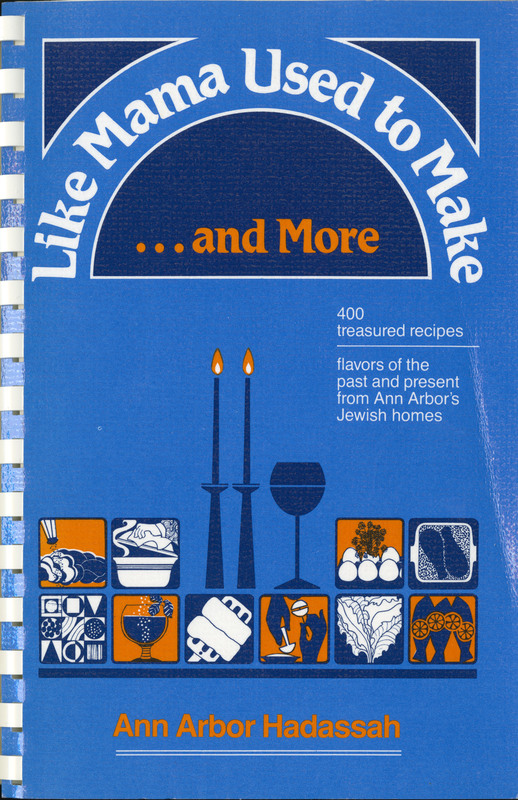
Charity Cookbooks from All 50 States
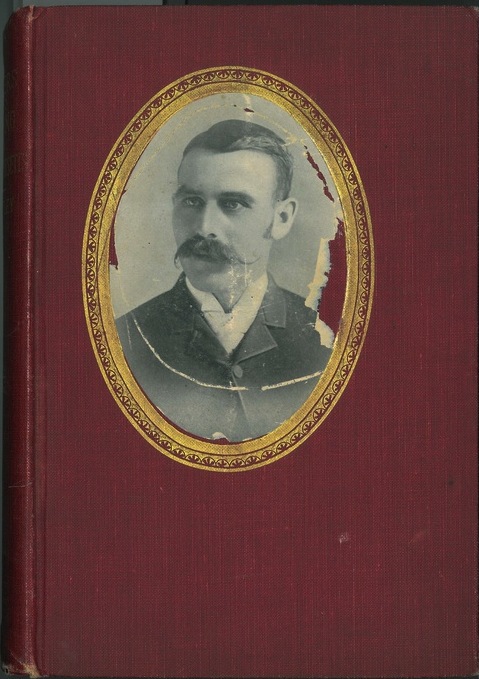
Bakers, Butchers, and Markets


